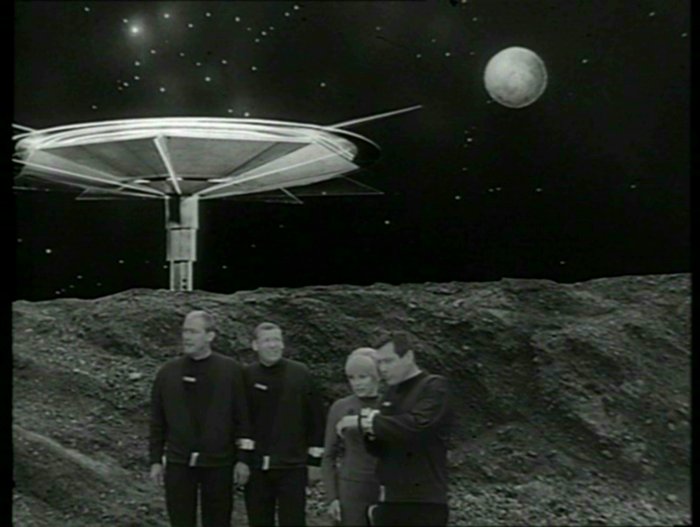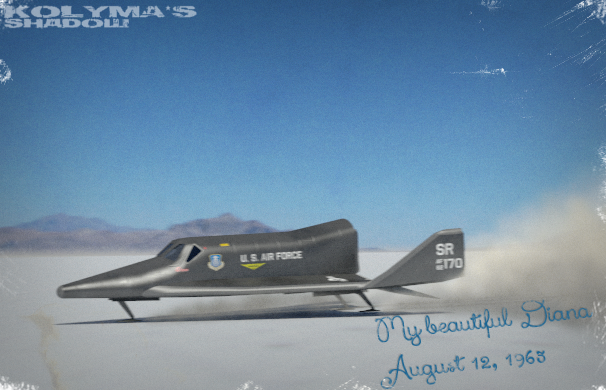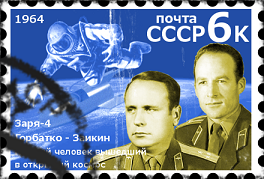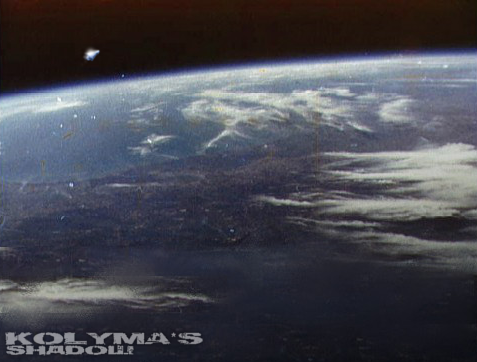"Far Frontier" differs from Trek in that they've eliminated the space ship completely. Certainly when I was in the 3rd grade watching Trek in syndication, the spaceships were the iconic thing that stuck in my head; I soon became frustrated they didn't show more of them, more often. And it's not just the exterior view; the sets of the Enterprise interiors, the Bridge especially, were a big part of the experience.
Take that away, and will the show have the same sort of impact on viewers?
It certainly will become more economically viable; what I didn't appreciate, back in third grade, was how very expensive all these futuristic sets were.
I think we'd see less of a cult following--there would be some, the way Twilight Zone has one for instance. In some ways the show would increase its impact--they can spend a bit more on making alien landscapes (especially city-scapes) with matte paintings, and more on hiring big-name guest stars. It might more easily achieve a solid five-year run because the network executives would be looking at the bottom line, initial ratings versus production costs, and when they splurged on hiring a big-name guest star that's the sort of cost these suits would understand and approve, if it paid off in keeping audience attention. But there probably would not be the same degree of cultural impact due to the imagery being more subtle and less grandly iconic.
Upshot then might be a show that is acclaimed by critics and a smaller cult following decades later, that is more relevant and "with-it" in the late Sixties, a more successful vehicle for Roddenberry's desire to preach which might result in a mix of painfully anvillicious shows with some that manage to reach levels of high art and are taught in English classes (the way "The Monsters Are Due on Maple Street," a 'Zone episode, was taught in my seventh grade class). Five solid years, with none of them limping along on life support the way the third season of Trek was OTL, might be just the thing for Trek to establish itself in these ways.
But on the other hand revivals would probably not have a tenth the momentum and pressure behind them they did OTL; there might never be any movies nor any thought of a Next Generation.
Aside from losing some of the iconic punch that eliminating the star ships would cause, the sensibility would be quite different. Star Fleet of OTL is, when you get down to it, a space navy--I'd argue it's technically more of a Coast Guard on steroids, but part of the iconic package is that it's Horatio Hornblower IN SPAACE! God knows the logistics of the alleged "voyages" of the Enterprise are just about impossible to map on any realistic star map; the ship moved around at the speed of Plot, that's all. But simply beaming our heros directly from one episode to the next will give even less of a sense of solid 3-D space; the plot trap of explaining why, in each Trek episode OTL Kirk did not simply flip open the communicator and say "Scotty, save my ass!" every time he got into any sort of jam would be compounded--in principle, the New Frontier Marshal can call on the entire Federation Peace Keeping force en masse at any moment--so why wouldn't he?
Replacing Hornblower then is somewhere on the spectrum between a city beat cop (as much Roddenberry's background as a Navy officer to be sure) and James Bond--presumably every episode is not resolved with massive application of Sending in the Marines for reasons similar to why we can't do that in every tricky situation in the Jet Age. Politics replaces logistics. So actually it's a far superior vehicle for exploring the tricky dilemmas of our modern, post WWII world where no place is more than a couple days away from the centers of power--but everyplace, even neighborhoods of the capital cities of the Great Powers, involves complications and hitches.
That means Roddenberry's pulpit pieces might strike all the more incisively at the 20th century point he is trying to make (or smash it if he handles it less than perfectly) but also that the plausible deniability the Trek format covered him with is thinner; he'd be more at risk of running afoul of the network suits getting on to what he's doing and more to the point, fearing that the troglydyte element of the US audience Harlan Ellison called the "scuttlefish" would do so.
OTL I marvel at right-wing Star Trek fans, but my fooling around on Trek fan sites assures me they are there--in numbers, yet. Why? How? I suppose the Naval imagery and atmosphere has a lot to do with that.
It would be harder to win that kind of bipartisan appeal when the trope is not space navy, but frontier marshal--the image his characters would have would then depend much more on the policies they carry out rather than the uniforms they wear and the hardware they handle.
Take that away, and will the show have the same sort of impact on viewers?
It certainly will become more economically viable; what I didn't appreciate, back in third grade, was how very expensive all these futuristic sets were.
I think we'd see less of a cult following--there would be some, the way Twilight Zone has one for instance. In some ways the show would increase its impact--they can spend a bit more on making alien landscapes (especially city-scapes) with matte paintings, and more on hiring big-name guest stars. It might more easily achieve a solid five-year run because the network executives would be looking at the bottom line, initial ratings versus production costs, and when they splurged on hiring a big-name guest star that's the sort of cost these suits would understand and approve, if it paid off in keeping audience attention. But there probably would not be the same degree of cultural impact due to the imagery being more subtle and less grandly iconic.
Upshot then might be a show that is acclaimed by critics and a smaller cult following decades later, that is more relevant and "with-it" in the late Sixties, a more successful vehicle for Roddenberry's desire to preach which might result in a mix of painfully anvillicious shows with some that manage to reach levels of high art and are taught in English classes (the way "The Monsters Are Due on Maple Street," a 'Zone episode, was taught in my seventh grade class). Five solid years, with none of them limping along on life support the way the third season of Trek was OTL, might be just the thing for Trek to establish itself in these ways.
But on the other hand revivals would probably not have a tenth the momentum and pressure behind them they did OTL; there might never be any movies nor any thought of a Next Generation.
Aside from losing some of the iconic punch that eliminating the star ships would cause, the sensibility would be quite different. Star Fleet of OTL is, when you get down to it, a space navy--I'd argue it's technically more of a Coast Guard on steroids, but part of the iconic package is that it's Horatio Hornblower IN SPAACE! God knows the logistics of the alleged "voyages" of the Enterprise are just about impossible to map on any realistic star map; the ship moved around at the speed of Plot, that's all. But simply beaming our heros directly from one episode to the next will give even less of a sense of solid 3-D space; the plot trap of explaining why, in each Trek episode OTL Kirk did not simply flip open the communicator and say "Scotty, save my ass!" every time he got into any sort of jam would be compounded--in principle, the New Frontier Marshal can call on the entire Federation Peace Keeping force en masse at any moment--so why wouldn't he?
Replacing Hornblower then is somewhere on the spectrum between a city beat cop (as much Roddenberry's background as a Navy officer to be sure) and James Bond--presumably every episode is not resolved with massive application of Sending in the Marines for reasons similar to why we can't do that in every tricky situation in the Jet Age. Politics replaces logistics. So actually it's a far superior vehicle for exploring the tricky dilemmas of our modern, post WWII world where no place is more than a couple days away from the centers of power--but everyplace, even neighborhoods of the capital cities of the Great Powers, involves complications and hitches.
That means Roddenberry's pulpit pieces might strike all the more incisively at the 20th century point he is trying to make (or smash it if he handles it less than perfectly) but also that the plausible deniability the Trek format covered him with is thinner; he'd be more at risk of running afoul of the network suits getting on to what he's doing and more to the point, fearing that the troglydyte element of the US audience Harlan Ellison called the "scuttlefish" would do so.
OTL I marvel at right-wing Star Trek fans, but my fooling around on Trek fan sites assures me they are there--in numbers, yet. Why? How? I suppose the Naval imagery and atmosphere has a lot to do with that.
It would be harder to win that kind of bipartisan appeal when the trope is not space navy, but frontier marshal--the image his characters would have would then depend much more on the policies they carry out rather than the uniforms they wear and the hardware they handle.







